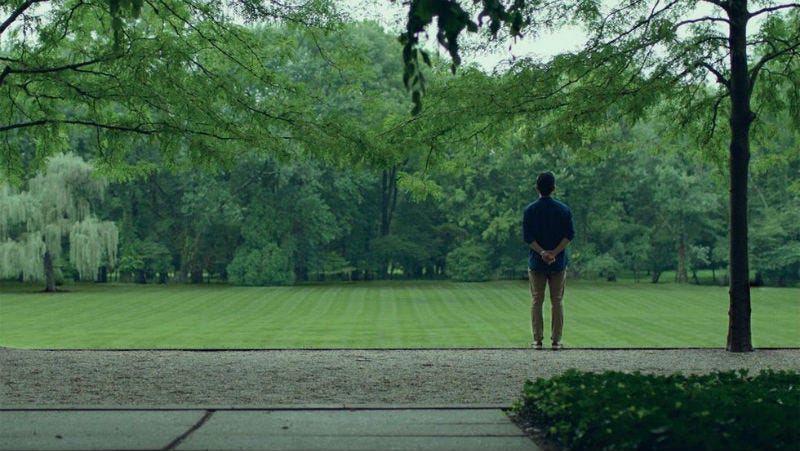Columbus

“You grow up around something, and it feels like nothing.” --Jin
I wanted to like “Columbus” a lot more than I did. It’s the sort of film you admire without making any kind of meaningful emotional connection to. The spare truth is I found it intriguing, occasionally mesmerizing, ambitious, and more than a bit dull.
It’s sort of movie that is loved less by audiences than critics and academics -- the very background of Koganada, the Korean video essayist who has studied the works of other directors for years and makes his first venture into feature filmmaking.
Unfortunately, the end result reads like something one film professor would make for another.
Let me put it this way: it’s the sort of film workaday people in southern Indiana hear about because it is set and was shot in Columbus, Ind. They seek out a review in The New Yorker or Rolling Stone or some other publication they don’t normally pay attention to, absorb the critic’s summary and lavish praise and ask, “So, it’s about… what, again?”
Alas, my guess is after watching “Columbus,” their question will linger.
The backdrops and famous modernist architecture of Columbus are indeed given beautiful display in this drama, which brings together two strangers who are each navigating a circuitous path between their homes and their fates.
One is a youngster, Casey (Haley Lu Richardson), who grew up in Columbus; she professes to want to stay there while harboring nonstop thoughts of leaving. The other is an older but still young man, Jin (John Cho), an American who has been living in Korea and has come to Indiana for the first time for reasons not of his making. He views it as another stop in a journey that’s mostly about escaping the shadow of his father, a famous architect professor and author.
They meet by happenstance, sharing smokes and conversations, which turn into increasingly deep encounters in which they confront their choices, critique those of the other and obtain enough of a nudge to break free from the inertia that has been holding them back.
There is a suggestion of romance, but much like “Lost in Translation,” to which this film is a thematic and aesthetic descendant, these characters are struggling with their self-identity rather than solitude.
Michelle Forbes plays Casey’s mom, a recovered drug addict who works night shifts at drudgery: cleaning offices, assembling cardboard boxes, etc. The pair have been through hard times together, abusive boyfriends and the like, and it’s clear the daughter is providing the support system for the mother rather than the other way around.
Casey appears to have several jobs herself. She works in the local library, and also plays tour guide for the constant stream of tourists who come to look at the Miller House and other famed examples of Columbus architecture. She takes Jin on their own private nighttime tours, as they muse about the buildings and their own lack of structure.
Parker Posey plays Eleanor, a colleague of Jin’s dad who has a past with the son. Rory Culkin is Gabriel, a twentysomething coworker of Casey’s and essentially her only friend.
Jin has come to Columbus because his father has fallen deathly ill while preparing to give a speech, and can’t be moved. He’s being hassled by his boss to continue his work, translating books form English to Korean and vice-versa. He admits he resents being forced to play the role of the good son to a distant father. He never put his life on pause for me, Jin complains, so why should I?
The two lead actors are quite good, especially Richardson, who brings a forlorn note to every scene. Koganada arranges them like furniture, their profiles silhouetted against the architectural backdrops just so. In the end, though, we regard them with just as much connection as we would a settee or window frame.
Modernist architecture is defined by its transparency. But there has to be something compelling beyond the pane to hold our interest.



